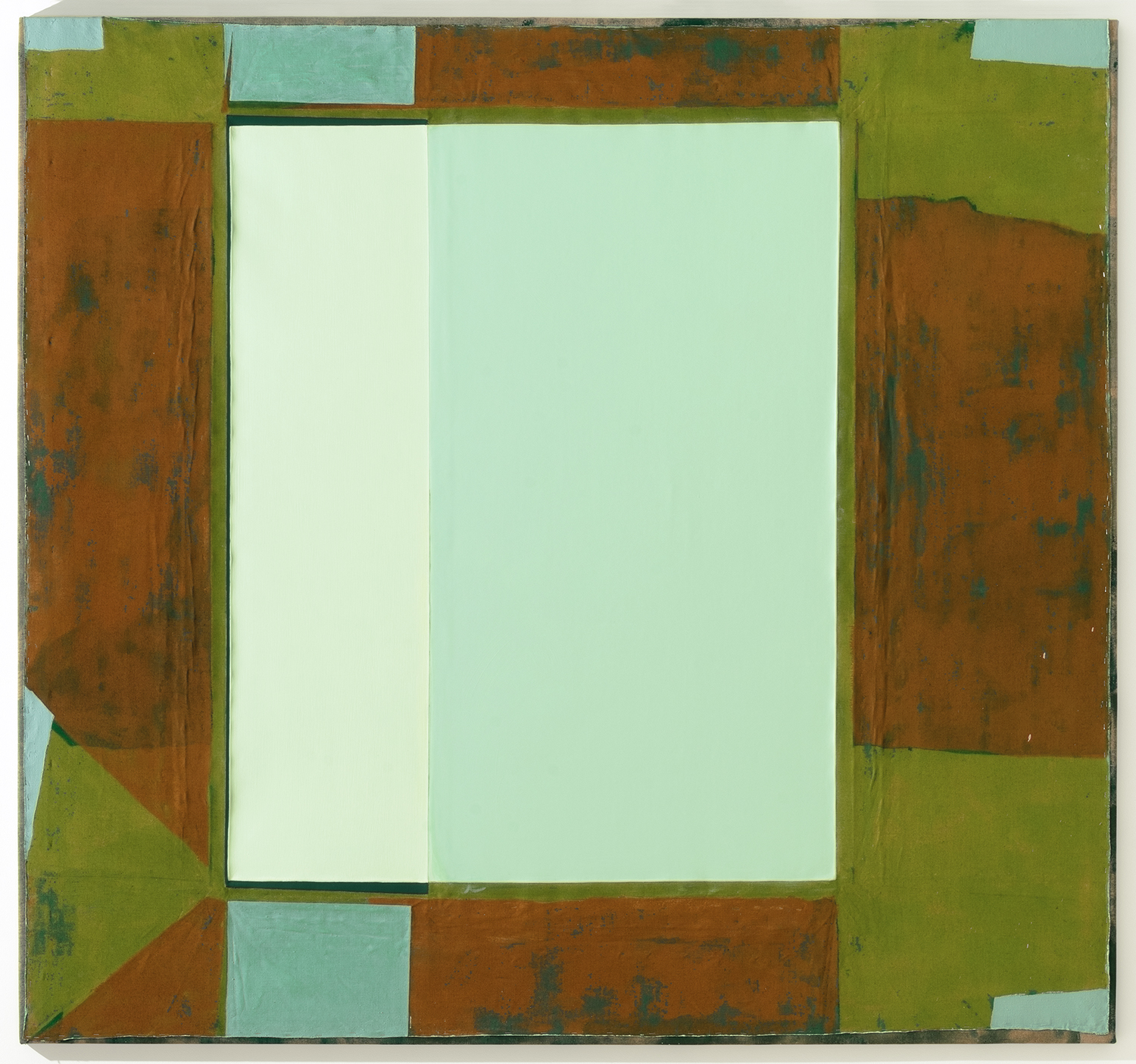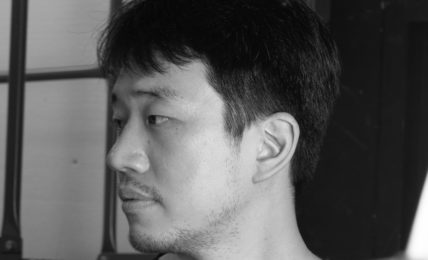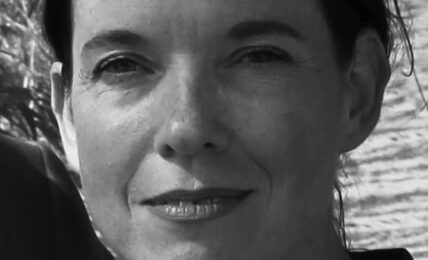Digital America interviewed Peter Christenson and Lester Black in November 2021 about their piece An Incomplete Diary of Covid Complaints (2021), collaborative work, and the influence of Covid on their art practice.
:::
DigA: An Incomplete Diary of Covid Complaints reads like a time capsule of early Covid. How do you see audiences interpreting the piece as we continue the long slog through the pandemic? Has the politics of vaccination changed the message for you and the contributing artists in any way?
PC: I suppose The Washington State Department of Health actually established the time capsule when setting up a public hotline for folx in the community to voice their concerns; we just essentially spotlit the time capsule by requesting the public records and inviting radical artists from the region to explore and
interpret and respond to these “covid complaints.” My project message remains the same as we slog through the pandemic: be kind, follow science, and protect the most vulnerable among us. I’m utterly confused and quite frankly appalled by any person’s selfish rebuffing of a community saving intervention (i.e., masks and vaccines), and will never understand how one’s decision to protect (or ignore) the vulnerable or oneself
correlates with political camps. I’m hoping that moving forward the Incomplete Diary of Covid Complaints project and archive continues to serve as an inquiry into these enigmatic and oftentimes problematic “politics.”
LB: This pandemic has blurred time for many people, including me, and my hope is that this project acts as an open-faced time capsule. Reading these complaints and seeing their illustrations hopefully captures how people felt during the first wave of the Pandemic. Our reaction to that will change in time. A shuttered bar or church might feel catastrophic in the moment, but that feeling might change as the distance in time grows and our perspective changes. For me, the shuttering of a bar or church feels inconsequential months and years later but the reaction to that closure, the bar owners or pastors who refused to close, feels very significant. In many ways, those early acts of uncivil disobedience to COVID restrictions foreshadowed the current rejection of safe, life-saving vaccines.
DigA: How did you choose contributing artists for the piece? As an artist/curator, what surprised you?
PC: As a curator and artist who regularly works with co-authors across the globe, the diverse voices and creative thinkers in this small campus community in Richland, WA continue to impress and motivate me; they’re a resourceful and innovative and unorthodox crew, and they catalyze our community at large—and that’s no easy task. My class that participated in this project, in particular, was brilliantly resourceful and politically and socially conscious and charged to use art to champion health and social justice, even in spite of a quarantine, pandemic chaos, and remote working. It’s inspiring to see this level of activism, resilience, and commitment in an undergraduate cohort, and I’m so proud to have had the opportunity to collaborate with
them.
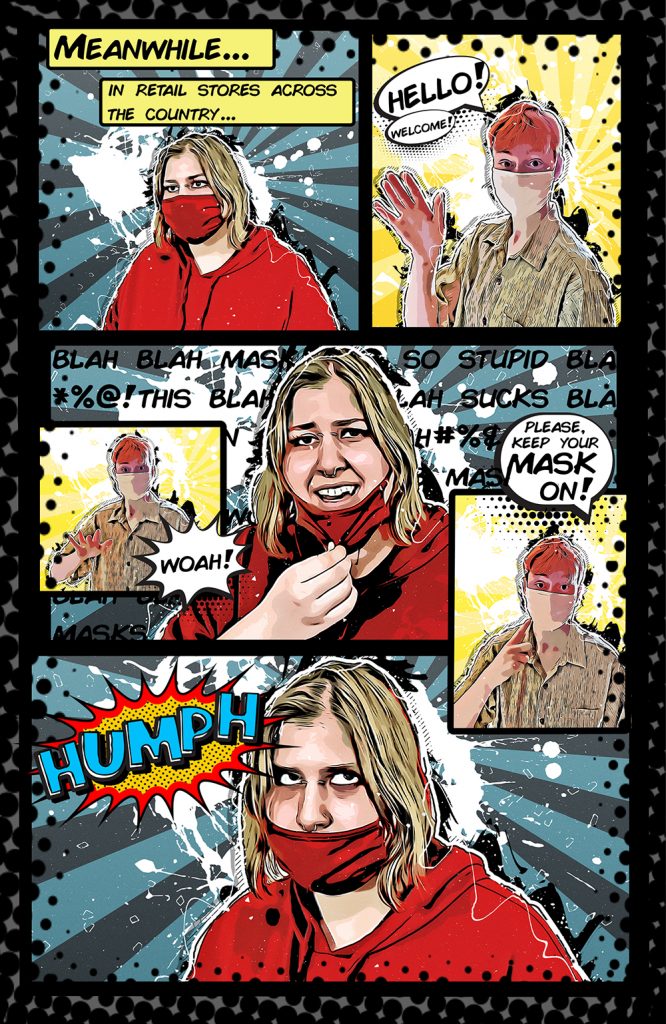
LB: We asked any of the students enrolled in Peter’s fine arts class to participate in this project. We gave very little direction to the artists, only asking them to somehow illustrate the narratives contained in the violations. This was intentional—we wanted each artist to bring their own perspective, their own personal history and voice and paradigm during the pandemic. I was surprised by how abstract most of the illustrations became (my background is in journalism, where realism is usually a requirement) but I think these abstractions ultimately uplifted the entire project. This project’s starting point is traditional journalism reporting (I acquired these complaints through a government record request) but we’re not trying to document specific events. We’re trying to explore a community’s state of mind. That includes the moods of people who filed these complaints, the people depicted in the complaints, and the artists who then illustrated them.
DigA: Peter, you’re a former social worker and licensed psychotherapist, and you describe your projects as “intermedia,” reflecting a “longitudinal qualitative case study and critical (albeit eccentric) exploration into identity, culture, pathology and health, place, and the human condition.” The result of this approach are projects with a wide-scope and a generous amount of satire, irony and humor. leftofcenter and Null Set are two collaboratives that we (happily) got lost exploring. What inspires you to create these broader, collective projects? Are current events often the catalyst? What have you learned about this approach to collective works over the years?
PC: Thanks for saying this. Despite a number of more seasoned artists telling me to rid myself of the psych stuff, I’ve never been able to disentangle my social work from my artistic practice, and I finally just stopped trying. I suppose the humor and irony in my work is one part institutional critique and one part lubricant to address serious and sometimes pathological or traumatic issues—things I see in myself and my communities—and make these discussions more palatable or “normalized.” Over time, I’ve come to accept that for me, art is less about making objects or pretty things, and more about creatively engaging the world around us, serving as a change agent, learning from others, and bringing people together. Art, just like psychotherapy, is a communicative medium, and they both manifest as tools to intervene, listen, and learn. I like working with people. I like learning and making with people. I often title my creative projects with a specific diagnostic code from the “Diagnostic and Statistical Manual of Mental Disorders,” a widely accepted instrument for psychiatric diagnosis, because I see my art, especially my co-authored socially engaged work, as a therapeutic process and psychosocial intervention—it’s a way to learn, grow, nourish, and evolve. And have some fun.

DigA: Digital America continues to review and publish dozens of Covid-related digital artworks. We see works exploring isolation, connection, introspection and fear as artists work through how to respond to the past year and half. Are there other pandemic-related works that inspired this piece, or you as an artist?
PC: I’d be remiss not to mention that this work is primarily an homage and tribute to all of the people who pulled us (and are still pulling us) through the Covid tunnel, artists or otherwise. They inspire me; they fueled us, motivated us, and kept us safe. A lot of the artists who participated in this project, for example, maintained full time jobs while attending classes during this past year, at grocery stores, hospitals, farms, clinics, schools; they put themselves at risk to help our communities. This is a collection of their voices. Our voices, together.
LB: Personally, I was inspired by the people in power (politicians, business owners, religious leaders) who intentionally flouted rules that were meant to protect the most vulnerable in society. I wanted to find a way to constructively explore the indignation I felt towards these people.
DigA: Care to share any new projects in the works?
PC: I have an immersive sound and video show coming up at a Seattle gallery that’s a culmination of a couple years of work where I’ve been digging holes across the state of Washington and dropping cameras and microphones into them. As is often the case with my art, I’ve titled the piece with a DSM diagnostic code: F40.298: Generalized Opus Foramina. I’m framing the work as a conversation with my client, Earth. Needless to say, I’m thinking we both need a lot more therapy.
LB: Trying to pay rent.
:::
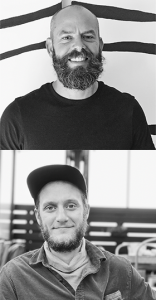
The Guest House Cultural Capital Residency (GHCCRes) is a visiting scholar residency program in Richland, WA. Richland is a mid-sized, rural-suburban community in Benton County in the southeastern part of the state of Washington, situated along the Columbia River. With the adjacent cities of Kennewick and Pasco, Richland is one of the “Tri-Cities.” The GHCCRes welcomes creative scholars with diverse backgrounds and research agendas to participate in the community-based residency. The GHCCRes seeks to promote creative research, diversity, education, entrepreneurship, and innovation in the Tri-Cities region, to define, archive, and perpetually re-define its “cultural trajectory,” and to collect and build creative capital in the area while empowering local constituents.

